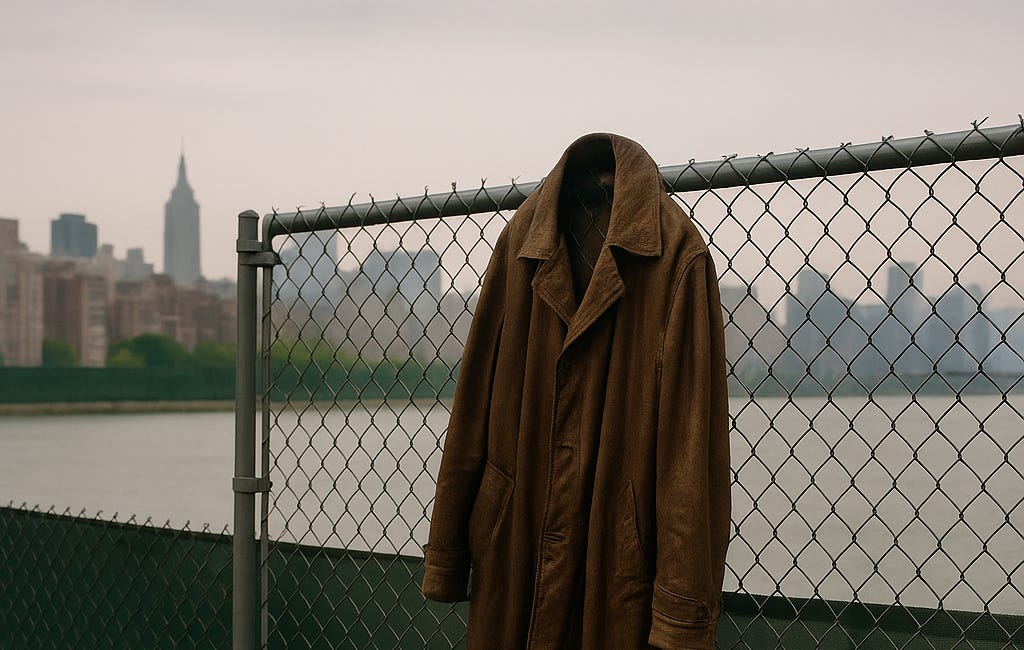The Spotlight and the Candle
How Two Voices Kept Roosevelt Island Listening
My first article for The Roosevelt Island Lighthouse opened with a nod to the writers who came before — the ones who poked at the quiet corners of this Island long before I sharpened my own pen. I wrote then that the reason I stepped up was simple: too many questions, not enough people asking them. If you let silence go unanswered long enough, it starts to sound like the truth.
One writer I followed asked all the right questions but never reported on them, while another had no questions but drew conclusions, backed by a plurality of sources. The public rarely had the time to sit with the questions long enough to see what they revealed. I knew that to truly get the public involved, they needed a seat in the room. But convincing a jaded or uninterested audience to care about a meeting on bus operations? That’s where Eleanor and I step in — to elevate those meetings so more can attend, or at least be aware, so they can form their own views.
while we’re here: David Stone has a sharp new piece you shouldn’t miss : About RIOC’s “Living on Roosevelt Island” Survey. On the surface, it’s just another survey about life on the Island, but David picks apart the framing and the silences: what questions were asked, what was conveniently left out, and what that reveals about how RIOC wants to tell the story of Roosevelt Island. He makes clear that the real takeaway isn’t the answers collected, but the agenda baked into the way those questions were written. It’s a reminder that surveys can be less about listening and more about shaping a narrative — and David has the experience and clarity to call it out.
Finding Focus
In this first year of coverage, my focus was wide — too wide. I’d chase a dozen leads at once, trying to fit every loose thread into one piece. That changed when Eleanor moved from the wings to the stage.
She’s been here since the beginning, not as a byline but as the sharpest pair of eyes in the room. She’d sit through committee meetings, board meetings, and the sorts of gatherings most people can’t endure without checking the clock every 90 seconds. She never looked away. She’d send me notes — not the obvious stuff, but the tells: a raised eyebrow at the wrong time, a phrase repeated like it had been rehearsed, the name no one dared say aloud.
The Breath Between Stories
When she began publishing, I didn’t become patient — that’s not in my wiring — but I did learn to let a story breathe. Pieces like The Appointment Drama, Pier Pressure, and A Willing Shield created the space for my own work to strike harder.
As our stories evolved, they became sharper and more nuanced. With that came the winds of power asking who was behind the words. Our sponsors were wise to build this publication around the stories, and they entrusted me to grow alongside Eleanor in any direction we found ourselves. We created names that made it clear they were fictional, because we are not the story. The power dynamics are the story. Where money flows, and where it doesn’t, is the story.
It’s somewhat funny that the same people who object to Theo or Eleanor are often the ones providing us with our material — sometimes directly, often indirectly.
Sharper Blades, Deeper Cuts
This year, I ran deep on pieces like Bigger Pie, Uneven Slices, exposing the favoritism and blurred rules behind the Public Purpose Fund allocations, and The OIG and Howard Polivy, where the unanswered questions about leadership failures were too big to ignore. Those stories were sharper because Eleanor was there — not to soften them, but to give them a shadow to push against.
Together, we’ve seen the results. On the street, people stop to talk — sometimes in thanks, sometimes to argue, always because they’re paying attention. Inside RIOC, We’ve seen the ripple effects: questions being asked on the record that weren’t even whispered a year ago, memos written with more care, board members who suddenly seem aware they’re being watched.
The Season Ahead
The boardrooms have been quiet, but that quiet is about to end. A new CEO will take his seat. Two new board members stepped in. The season ahead will not be short on material, and we’ll be ready. I’ll keep the spotlight fixed where it belongs. Eleanor will be there with her candle, watching the edges, noticing the shadows the light doesn’t reach.
At first, I chased leads, knocking on doors and trying to coax stories out of neighbors. Now I’ve learned I don’t need to. The right information finds its way to us. Better still, our direct sources are few, trusted, and know exactly what matters. Eleanor catches the hints; I dig through the documents. Together, we see more than most would ever be willing to say out loud.
Because here’s the truth: traditional local media survives on a fragile balance. It depends on government for access and, in some cases, funding. It leans on real estate developers — the true power brokers — for advertising and influence. And it chases the loudest local voices, the activists who fill the room. But volume doesn’t always reveal the silences, the voids, the missing details. The real stories live where no one is speaking — in the moments when Eleanor catches a word out of place, and when my research and connections breathe air into truths that would otherwise slip past unnoticed.
One season in, we’ve learned where the cracks are — and we’re ready to keep the light on them.
The Wet Coat
Summer on Roosevelt Island is a soft trick of the light. The ferry leaves a wider wake, the grass leans toward the breeze, and the boardrooms sit empty. Officially, they call it a two-month recess. Unofficially, it’s a time when dust can gather on promises.




We need public awareness